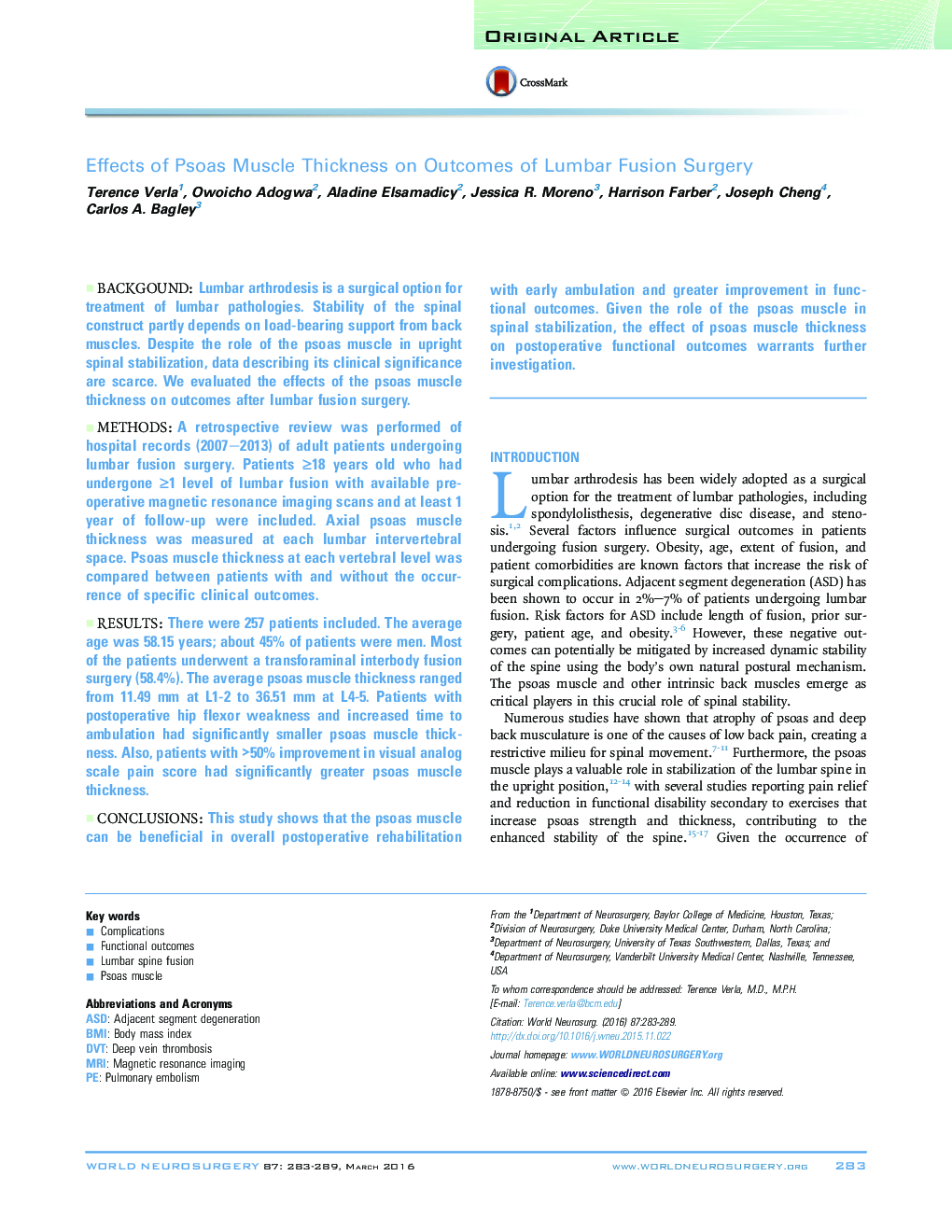| Article ID | Journal | Published Year | Pages | File Type |
|---|---|---|---|---|
| 6043978 | World Neurosurgery | 2016 | 7 Pages |
BackgoundLumbar arthrodesis is a surgical option for treatment of lumbar pathologies. Stability of the spinal construct partly depends on load-bearing support from back muscles. Despite the role of the psoas muscle in upright spinal stabilization, data describing its clinical significance are scarce. We evaluated the effects of the psoas muscle thickness on outcomes after lumbar fusion surgery.MethodsA retrospective review was performed of hospital records (2007-2013) of adult patients undergoing lumbar fusion surgery. Patients â¥18 years old who had undergone â¥1 level of lumbar fusion with available preoperative magnetic resonance imaging scans and at least 1 year of follow-up were included. Axial psoas muscle thickness was measured at each lumbar intervertebral space. Psoas muscle thickness at each vertebral level was compared between patients with and without the occurrence of specific clinical outcomes.ResultsThere were 257 patients included. The average age was 58.15 years; about 45% of patients were men. Most of the patients underwent a transforaminal interbody fusion surgery (58.4%). The average psoas muscle thickness ranged from 11.49 mm at L1-2 to 36.51 mm at L4-5. Patients with postoperative hip flexor weakness and increased time to ambulation had significantly smaller psoas muscle thickness. Also, patients with >50% improvement in visual analog scale pain score had significantly greater psoas muscle thickness.ConclusionsThis study shows that the psoas muscle can be beneficial in overall postoperative rehabilitation with early ambulation and greater improvement in functional outcomes. Given the role of the psoas muscle in spinal stabilization, the effect of psoas muscle thickness on postoperative functional outcomes warrants further investigation.
